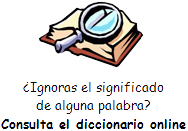Create an English Language Immersion
Experience
Have you ever seen an advertisement for a language
immersion program? These programs can take place in a school or other
location where a learner can practice using their second language in a
natural setting. The language immersion situation forces the learner to
use the new language throughout the day. They must try to communicate
their ideas and understand native speakers. Speaking and hearing others
use the language at meals, while shopping or taking part in other
activities gives language learners valuable (and enjoyable) practice.
The use of new technologies can help you create your own immersion
experiences. Below are some details on how you can plan an English
immersion program for yourself and carry it out in your own home.
Follow these basic guidelines in making your program:
- Make a plan – how long will you do the immersion? Plan your time so
that you will get some practice every day during the period of time you
choose.For example, you may decide that for the next week, you will
speak only English after 6:00 pm, or listen to English news every
morning at 7:00.
- Look for chances to get both passive and active language practice.
Passive language use is listening or reading, while active language use
involves speaking or writing.
- Measure your progress with tests and give yourself prizes or treats
when you meet goals.
Step one: Know your starting level
It is best to know your ability level to create your immersion program.
You can test yourself with a free online language test, like the EFSET
test. After a period of time, you can take the same test again and see
how much you improved. Knowing your level also lets you choose materials
at the right level. The VOA English Challenge test on our website will
give you a score on the Council of Europe’s (CEFR) scale. That goes from
A1 – C2.
Step two: Choose materials a little above your
level
Immersion programs often include material that is at a little higher
level than the material you normally use. On our website, for example,
there are three levels: Beginner, Intermediate, and Advanced. If you
have been reading at the Intermediate level for some time, try choosing
readings from our Advanced level, such as American Stories.
Here are some ideas on how to find materials to help you practice the
four language skills in English:
Reading and vocabulary
Here are some ideas for reading and vocabulary:
Change your social media language to English. Follow English speakers
and make comments in English.
Subscribe to daily news updates in English, like our newsletter or a
national news service in your country or an English-speaking country you
want to learn more about.
Cooking something new? Find a recipe in English to follow. Or watch a
cooking video online in English.
Read children’s stories in English to your own or a friend’s child.
Put small signs around your house with the name of common objects in
English. After you learn the words, you can act like a broadcaster who
is telling about your movements through your house: “She is walking
through the living room now. Now she is in the kitchen. She is picking
up a cup…”

Listening
Here are some ideas for listening materials:
Listen to our daily podcast. You can read the stories after you listen
on our home page.
Use TuneIn or other podcast services to subscribe to English podcasts.
Listen to English-speaking artists performing your favorite style of
music - often these are available with subtitles on YouTube. Sing along
if you like hearing yourself sing.
Watch English movies and television programs on a streaming service.
Turn off the subtitles to make it harder. Later go back and watch again
with the subtitles turned on if you need them.
Speaking
Here are some ideas for speaking:
Join conversation clubs on the internet or in person, such as Clubhouse,
Meetup, or the Mixxer. Learn more in our article, Five Tips for Great
Language Exchanges.
Talk with yourself in English. This may feel strange at first. However,
the more you do it, the more you will begin to think in English, which
is a big step toward becoming fluent. If you have a pet animal, speak to
it in English.
Join a speech-making group or class, such as Toastmasters.
Play online games in English. Having fun while you learn makes it much
easier to remember what you are learning. One game service especially
for language learners is Influent.
Writing
Here are some ideas for writing:
Write your to-do list or marketing list in English.
Keep a diary or daily journal in English. Writing about your own
experiences will help you learn words important to your life.
Write comments in blogs and on social media in English. You can also
write comments on our stories, of course!
Step three: change up your practice
On some days, put more of your effort toward reading and writing. On
others, spend more time on listening and speaking. Try to avoid doing
the same thing each day. And take a break now and then to rest your
brain. Read our story on spacing and interleaving your learning for more
on this topic.
Step four: make new friends and have fun
Through conversation clubs and the new activities that are part of your
language immersion, you will probably find new friends. Speak English
with them as often as you can.
Look for ways to make your immersion program fun, like inviting a friend
or family member to join you. |
![]() ).
Utiliza el botón derecho del ratón y "guardar enlace" para descargar el
fichero a tu PC, tablet, Smartphone, etc.
).
Utiliza el botón derecho del ratón y "guardar enlace" para descargar el
fichero a tu PC, tablet, Smartphone, etc.![]() Escucha el audio
Escucha el audio



